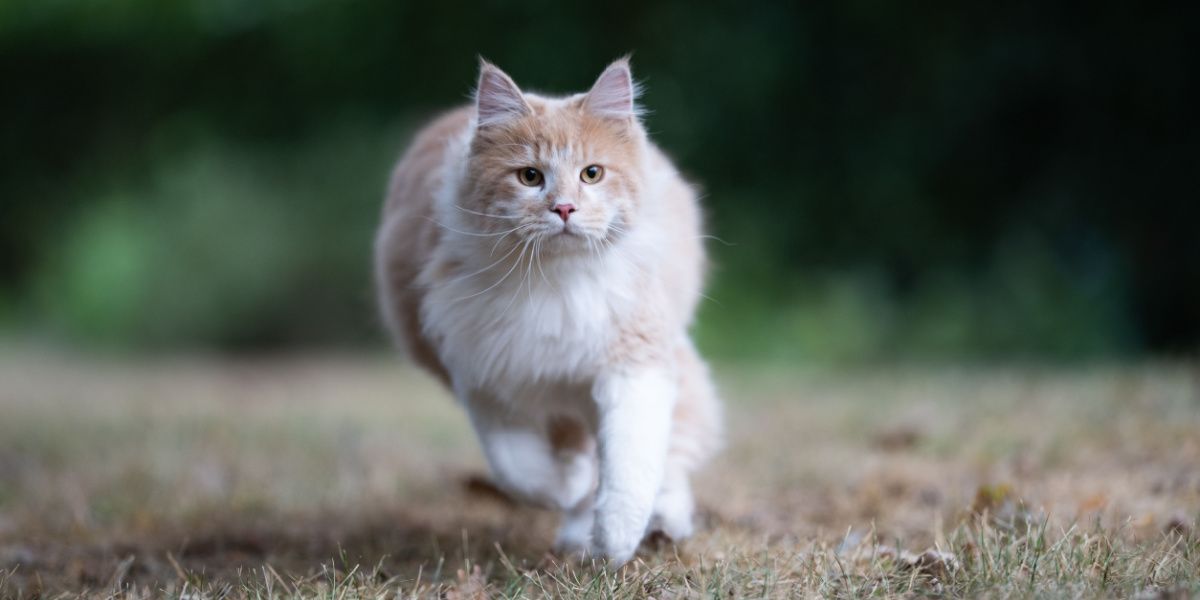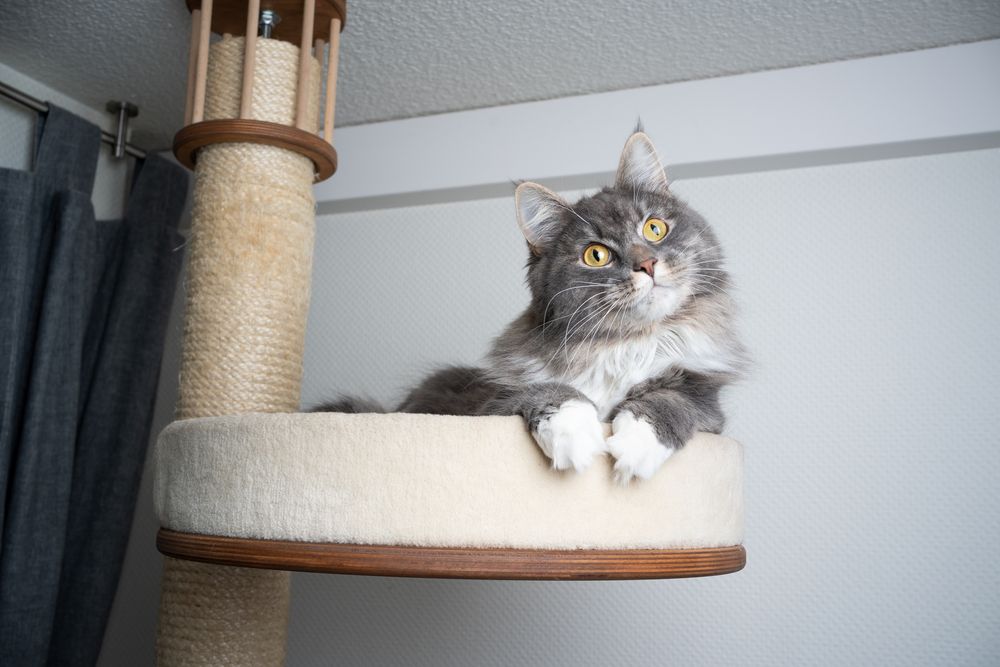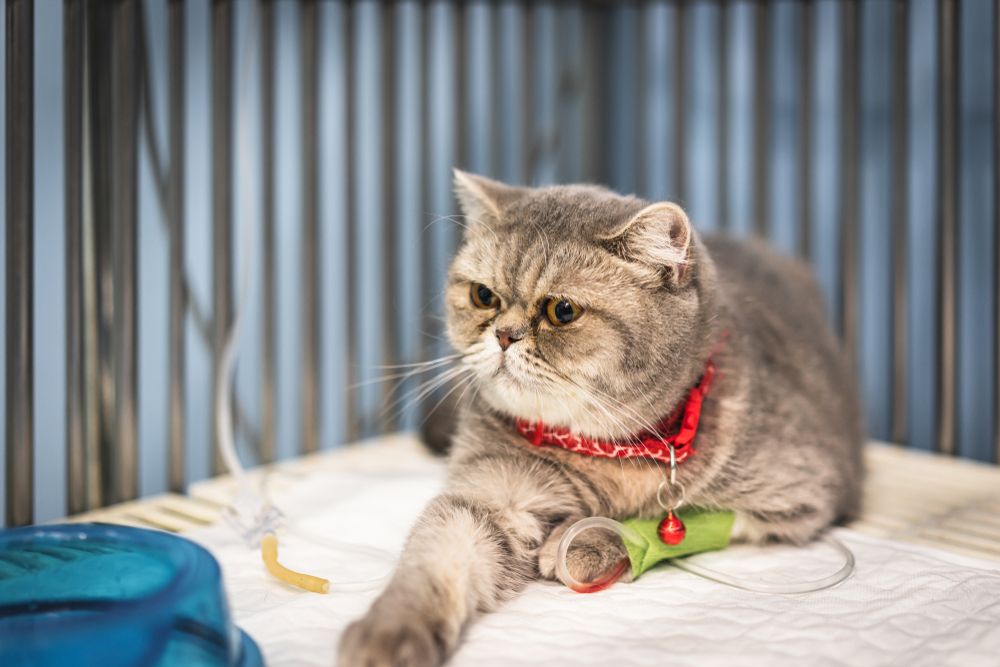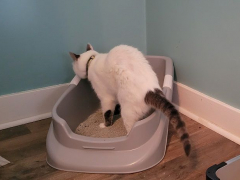
Quick Overview: Vestibular Disease in Cats
 Urgency: High, should be treated as an emergency
Urgency: High, should be treated as an emergency
 Home Remedies: General nursing including assistance with feeding, drinking and general care are important aspects of treatment.
Home Remedies: General nursing including assistance with feeding, drinking and general care are important aspects of treatment.
 Vaccine Available: None
Vaccine Available: None
 Treatment Options: May include anti-nausea medication, anti-inflammatory medication, specific treatments like antibiotics or even surgery for some cases (e.g. middle ear infection or tumors).
Treatment Options: May include anti-nausea medication, anti-inflammatory medication, specific treatments like antibiotics or even surgery for some cases (e.g. middle ear infection or tumors).
 May be Linked to: Some systemic diseases, including trauma, some viral infections and high blood pressure.
May be Linked to: Some systemic diseases, including trauma, some viral infections and high blood pressure.
 Diagnosis: Usually by a veterinary examination, but more extensive investigation, with a range of tests, is often needed.
Diagnosis: Usually by a veterinary examination, but more extensive investigation, with a range of tests, is often needed.
 Requires Ongoing Medication: Most cats do recover, and ongoing medication is not needed.
Requires Ongoing Medication: Most cats do recover, and ongoing medication is not needed.
 Common Symptoms: Moving in an uncoordinated way, loss of balance, head tilt, abnormal position of the head, general weakness, leaning or falling to one side.
Common Symptoms: Moving in an uncoordinated way, loss of balance, head tilt, abnormal position of the head, general weakness, leaning or falling to one side.
 Other Names: May incorrectly be referred to as a "stroke".
Other Names: May incorrectly be referred to as a "stroke".
 Diagnosed in Cats: This is a common problem in pet cats.
Diagnosed in Cats: This is a common problem in pet cats.
 Home Treatment: While home nursing care is important, cases of vestibular disease always need to be examined by a veterinarian before any home treatment is given.
Home Treatment: While home nursing care is important, cases of vestibular disease always need to be examined by a veterinarian before any home treatment is given.
Cats are well known for their ability to sit, stand, walk, run and jump easily and steadily, with excellent balance and coordination. The physical structures that allows cats to be so physically nimble and well-balanced is known as the “vestibular system”.
If this system malfunctions, this is known as “vestibular disease” (also known as vestibular syndrome), and it results in an inability for the cat to move as smoothly as normal. It is fairly common in cats, and results in our usually agile pets moving in an unbalanced and uncoordinated way.
Causes of Vestibular Disease
The vestibular system is divided into two sections which work together. The peripheral vestibular system is made up of receptors located next to the cochlea in the inner ear. The central vestibular system, located in the brain and spinal cord, is made up of three part: the cerebral cortex (forebrain), cerebellum and the spinal cord.
Any condition which disrupts any of these components of the vestibular system can cause vestibular disease.
The following are the more common causes:
- Otitis media (inflammation of the middle ear) and otitis interna (inflammation of the inner ear): inflammation of these parts of the ear, such as after an ear infection, can lead to peripheral vestibular disease.
- Nasopharyngeal polyps: these are benign growths that start in the tube connecting the pharynx (back of the throat) with the middle ear.
- Feline Infectious Peritonitis (FIP)
- Meningitis or encephalitis: inflammation of the central nervous system can affect the central vestibular system.
- Vascular infarcts (blood clots) or hemorrhage: these disrupt the blood supply to components of the vestibular system.
- Congenital malformations of components of the vestibular system and inherited CNS storage diseases: these are more likely to be seen in certain breeds of cat, including Burmese, Siamese and Tonkinese, and the age of onset is usually when they are just a few weeks old.
- Cancer (tumors): can affect components of the vestibular system.
- General systemic diseases: this includes hypertension (high blood pressure), thiamine deficiency and toxins (including some medicines).
- Idiopathic disorders: this means that the cause of the vestibular disease remains unknown, despite investigations attempting to find out the cause.
- Trauma: head or spinal trauma can cause direct physical damage to components of the vestibular system.
Symptoms of Vestibular Disease

The sudden onset of a head tilt, or a circling, staggering walk, are common symptoms of vestibular disease.
A normal health cat can walk, run and jump, moving in a coordinated way. A cat with vestibular disease loses this ability, and starts to move in an uncoordinated way, losing their sense of balance. They may also feel very nauseous, affecting appetite.
This combination of factors present as these symptoms:
- Head tilt
- Abnormal position of the head
- General weakness
- Leaning to one side
- Falling over to one side
- Staggering
- Incoordination of the limbs
- Rolling over and over
- Nystagmus (eyes flicking rapidly from side to side, or up and down)
- Facial paralysis
- Vomiting
- Loss of appetite
Diagnosis of Vestibular Disease
If your cat develops any of the above signs, you need to take them to your DVM veterinarian without delay, so that a diagnosis of the cause of the problem can be made and appropriate treatment can be given.
Your vet will start by discussing your cat’s condition and their overall general health with you, including any history of trauma or exposure to poisons. Next, your veterinarian will check your cat’s body carefully all over, checking for any physical abnormalities, taking the cat’s temperature and listening to their chest with a stethoscope. They will pay particular attention to examining your cat’s eyes (usually with an ophthalmoscope) and ears (with an otoscope). They will also carry out a neurologic exam, checking your cat’s reflexes and proprioception.
It’s very likely that your veterinarian may carry out blood work, including the usual minimum database of diagnostic tests, such as hematology (blood count) and biochemistry profiles (including important electrolytes such as potassium). Your veterinarian may recommend specific blood tests for some viral infections such as FeLV and FIV, since there are significant implications if your cat is positive for either of these. Your cat will also have their blood pressure taken.
If your cat’s case is more complicated, further investigation may be needed. This may include x-rays, CT or MRI scans to examine the details of your cat’s internal structures, urine tests, analysis of cerebrospinal fluid and cultures of potential areas of infection such as the ears.
Treatment for Vestibular Disease

Many patients with vestibular disease will require hospitalisation for fluid therapy and medication.
Treatment for vestibular disease depends on the underlying cause of the issue, but commonly, the treatment relies upon symptomatic care and general nursing.
Medication may be given to reduce nausea: Maropitant citrate (Cerenia®) is the most common drug to be used. Your cat may also be given anti-inflammatory medication. More specific treatments will depend on the diagnosis, but could include antibiotic treatment and surgical drainage of the middle ear in cases of otitis media or surgical removal of tumors.
As vestibular disease induces nausea, many cats struggle to eat and drink well. In some cases, intravenous or sub-cutaneous fluid therapy may be given if a cat is unable to eat or drink themselves. Nursing care is also hugely important, either at home or in a veterinary hospital, to encourage intake of water and nutrients.
It is impossible to estimate the cost of treatment, as there are so many possible factors going on in the background of individual cases. You should ask your veterinarian for a detailed estimate before agreeing to proceed with treatment. Costs could vary from $400 for a simple case that does not require significant intervention to $6000 or more for an exceptionally complex case (e.g. with MRI scans and surgery of the central nervous system).
The prognosis depends on the underlying cause. Cats with idiopathic vestibular disease, otitis media/interna, and cerebrovascular disease often begin to improve within a few days, gradually recovering over two or three weeks. In some cases, certain signs (such as head tilt and facial paralysis) may remain permanently.
Cat Care Tips
Cats with vestibular disease need good support at home to help them with basic tasks.
- Assisted feeding: cats should be supported in an upright position when eating or drinking to help them to eat, and to reduce the risk of aspiration of food or fluid.
- Calm and quiet: cats are sensitive creatures, and any extra stress can exacerbate signs of vestibular disease. Cats will recover better in calm, quiet places, away from busy thoroughfares.
- Remove obstacles: obstructions and risks (such as steps) should be avoided so that the cat can move around safely.
- Light: the cat’s vision may be impaired by the condition, so keep rooms brightly lit.
Prevention of Vestibular Disease
There are no specific ways to prevent vestibular disease in cats. Regular health checks with a veterinarian and vaccination against preventable disease are also recommended. Prompt treatment of ear infections can reduce the likelihood that the problem will spread to the middle or inner ear.
Frequently Asked Questions
What can cause vestibular disease in cats?
Otitis media (inflammation of the middle ear) and otitis interna (inflammation of the inner ear), Nasopharyngeal polyps, Feline Infectious Peritonitis (FIP), Meningitis or encephalitis (inflammation of the central nervous system), vascular infarcts (blood clots) or hemorrhage, ongenital malformations of components of the vestibular system, inherited CNS storage diseases, neoplasia (tumors) and systemic diseases such as hypertension (high blood pressure), thiamine deficiency and toxins (including some medicines), and trauma (e.g. a knock to the head). Idiopathic vestibular disease is common: this means that the cause remains unknown, despite investigations.
How do I know if my cat has vestibular disease?
If your cat is having difficulty walking, running, jumping because of a lack of coordination, then vestibular disease is a possibility. Other common signs include a head tilt or eyes flicking from side to side.
Can a cat survive vestibular disease?
Most cases of vestibular disease respond to treatment, but there are sometimes unusually severe cases, or very serious underlying causes (such as brain tumors) where successful treatment may be impossible, and your veterinarian may recommend euthanasia.
How serious is vestibular disease in cats?
This is a serious condition that always requires a prompt examination by your DVM veterinarian.







